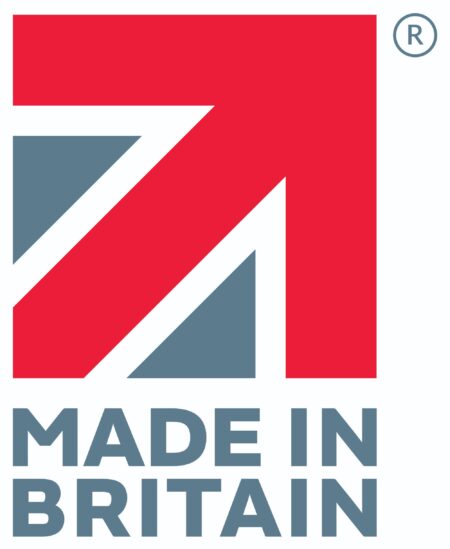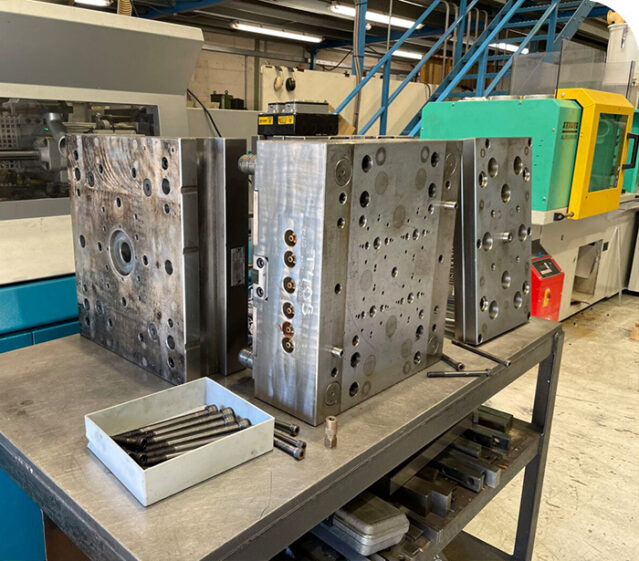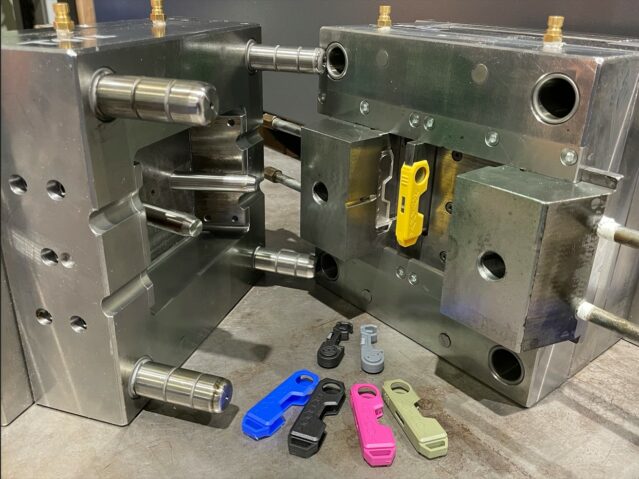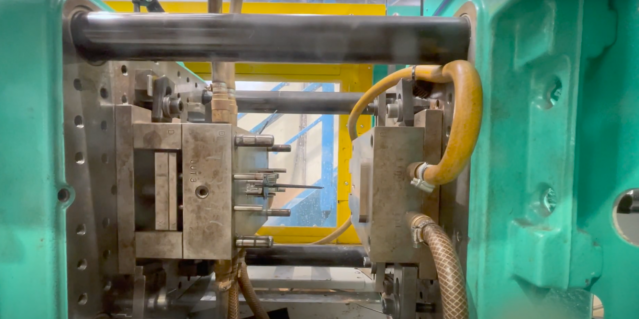18/07/2025
Single Cavity vs Multi-Cavity Injection Moulding
Injection moulding is widely used across many industries, but not all methods of injection are the same. The type of mould you use plays a big part in how the process works, and the end result. Different moulds are designed to meet different production needs, whether that’s making one part at a time or several in a single run.
The mould you choose will also affect production time, cost per part and overall efficiency.
In this blog, we’ll explain the three main types of injection moulds: single cavity, multi-cavity and family moulds. We’ll break down the benefits of each, and help you understand which might work best for your project.
What is a mould cavity?
A cavity is the hollow space inside of a mould that shapes the plastic injected into it. The number of these cavities affect how many parts are made each time the mould runs.
Let’s talk about the three common types and their typical uses.
Single cavity moulds
A single cavity mould makes one part per cycle. It’s often used for low volume production runs, or for parts where precision is very important.
This approach is common in industries where there’s no room for error. For example, medical components often need to meet strict quality and safety standards. Using just one cavity allows for tight control over each part. It also makes it easier to spot and fix issues during early production.
Single cavity moulds can also be useful if you’re still testing a new design, working through a prototype, or have multiple part variations to try before scaling up.
Because it only produces one part at a time, this method can take longer and increase the cost per unit. However, if you’re a business that values accuracy, control, or flexibility early on, a single cavity mould might be the most practical place to start.
Multi-cavity moulds
Multi-cavity moulds have several cavities that produce several identical parts at once. This makes them ideal for high-volume production. By creating more parts in each cycle, you can reduce lead times and bring down the average cost per part.
Although the upfront cost to design and build a multi-cavity tool is higher, it often becomes more cost effective over time, especially when demand is steady or increasing.
This type of mould is ideal for products where consistency and speed are important. Industries such as automotive and electronics rely heavily on multi-cavity tools to meet high demand without compromising on quality. It might also be a good fit for consumer goods, packaging, and any product where you need to produce thousands of identical parts.
If you’re looking to scale up production or want to reduce long term costs, a multi-cavity mould might be the right choice.
Family moulds
Family moulds contain different cavities for different parts of the same product. Instead of running separate moulds for each component, you can produce several related parts in the same cycle. This can help to streamline your production process and reduce overall tooling and production costs.
They work well for assemblies where the parts are used together - like a toy set or a multi-part container. Getting your components produced all in one go speeds up post-moulding assembly and keeps batch sizes consistent.
Family moulds are especially helpful in low to medium volume production where saving time and avoiding the cost of multiple tools make a big difference.
One thing to keep in mind is flexibility. If one part becomes redundant or changes in design, that section of the mould may no longer be usable. For that reason, family moulds are best used for well established product designs that are final and unlikely to change.
What type of mould do I need?
Choosing the right mould will depend on what you’re manufacturing, how many parts you need and how quickly you need them.
To make the best decision for your project and your business, it’s worth looking at the bigger picture. Ask yourself the following questions to help narrow things down.
How many parts do you need? If you’re producing thousands of parts, speed and efficiency will matter more. If you’re only making a few hundred or still in development, flexibility might be the priority.
Are your parts identical or different? If you’re producing one part repeatedly in high volumes, a multi-cavity mould may meet your needs. If you’re producing several different parts in batches, a family mould is likely better suited.
Will the part design change? If you plan to enhance your parts in the future or bring out model variants, it may be more cost effective to use a single cavity tool. You can test and refine the design without committing to a full production setup.
How precise do the parts need to be? Some industries, like medical or XX, have strict quality control standards. In those cases, a single cavity mould is often the most reliable choice.
What are your long term plans?
If you’re testing the waters now but expect to scale up later, we can help you plan for that by starting with a flexible solution and adapting it when the time is right.
Once we have a stronger understanding of your goals, we can help you choose the best mould to suit them. Here’s a simplified guide to get you thinking.
Real-life Situation Recommended Mould Type Why It Works We're producing thousands of identical parts each year Multi-cavity mould Produces several identical parts at once. Ideal for reducing unit costs and keeping up with steady demand. We're trialling several prototype parts with different designs Single cavity mould Offers flexibility and lower upfront cost. Easier to make design tweaks before committing to full production. We only need a few hundred of the same part Single cavity mould Best suited for small production runs. Keeps tooling costs down and avoids over-investing early on. Our product is still in development or testing Single cavity mould Simple and cost-effective for early-stage projects. Allows for changes without the cost of reworking a complex tool. Our product includes several parts that will be assembled together Family mould Produces multiple related components in a single cycle. Speeds up production and keeps parts consistent for assembly.
Choosing the right mould with Bowles & Walker
The right mould makes a significant difference to cost, quality and turnaround time. At Bowles & Walker, we’ve helped businesses of all sizes, from early stage prototypes to large scale production.
We’ll always give honest advice. If modifying an existing tool is the most cost effective option, we’ll say so. If a multi-cavity mould will save you money in the long term, we’ll help you build it.
Give us a call on 01953 885294 or email info@bowles-walker.com to chat through your project today.






